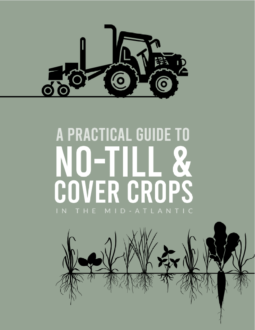No-till and cover crops are among the most cost effective tools to reverse soil and carbon loss and improve soil health; the economic, agronomic and environmental benefits of these practices are well known within the farming community. Transitioning from conventional farming to no-till, and incorporating the use of cover crops, requires a higher level of management and demands a substantial investment in time to learn the information necessary to succeed. Farmers face hurdles including field soil preparation, equipment purchasing decisions, and management of other impacts on agronomic practices.
This manual, developed by staff at the North Jersey RC&D, is designed to help agricultural service providers and farmers as they strive to implement new practices. It is designed for individuals who understand the merits of no-till and cover crops, but unsure how to implement these practices.
The manual covers:
- No-till
- No-till Basics
- Successful Transition to No-till
- Components and Retrofits
- Troubleshooting
- Cover Crops
- Seed and Species Selection
- Cover Crop Application
- Cover Crop Termination
- Advanced Soil Health Practices
- Planting Green
Want more information? See the related SARE grant:
This material is based upon work that is supported by the National Institute of Food and Agriculture, U.S. Department of Agriculture through the Sustainable Agriculture Research and Education (SARE) program. Any opinions, findings, conclusions, or recommendations expressed in this publication are those of the author(s) and should not be construed to represent any official USDA or U.S. Government determination or policy.
